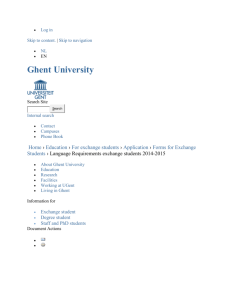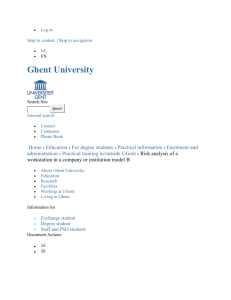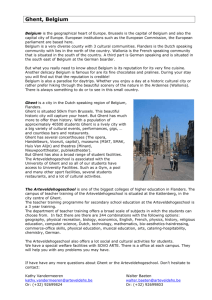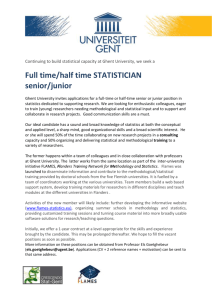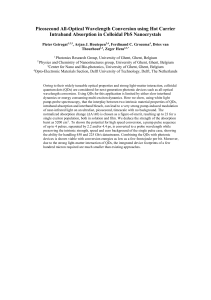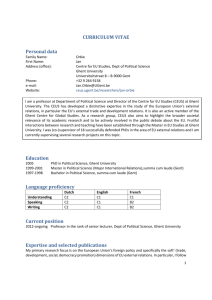EGU 2009 porcupine DVR - ORBi
advertisement
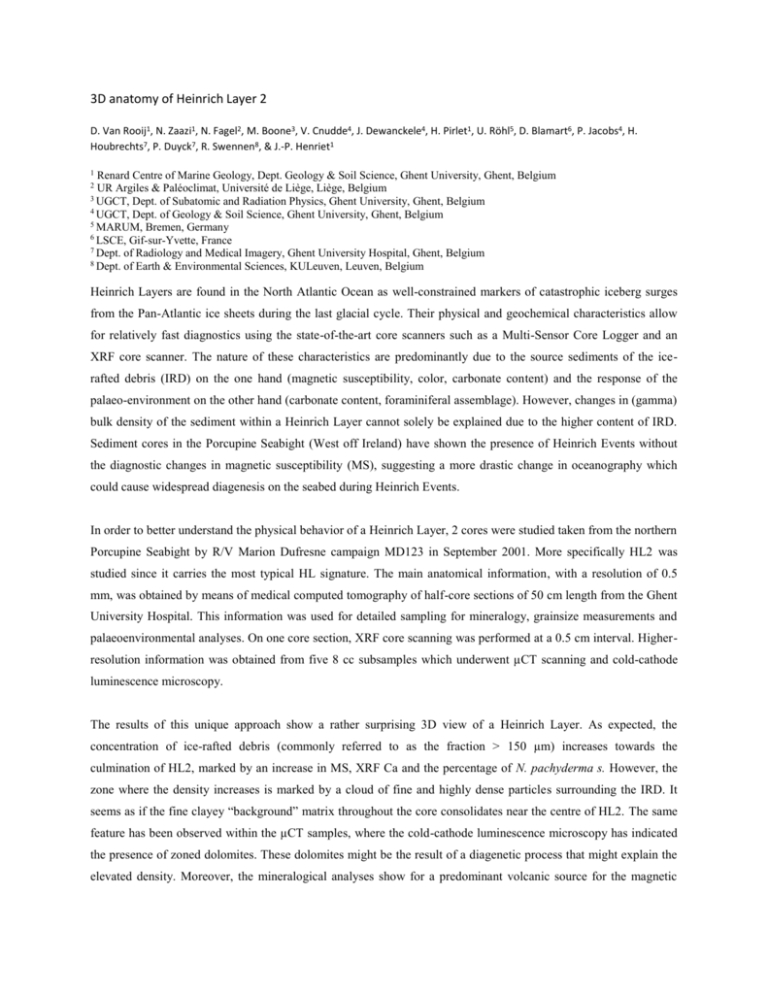
3D anatomy of Heinrich Layer 2 D. Van Rooij1, N. Zaazi1, N. Fagel2, M. Boone3, V. Cnudde4, J. Dewanckele4, H. Pirlet1, U. Röhl5, D. Blamart6, P. Jacobs4, H. Houbrechts7, P. Duyck7, R. Swennen8, & J.-P. Henriet1 1 Renard Centre of Marine Geology, Dept. Geology & Soil Science, Ghent University, Ghent, Belgium UR Argiles & Paléoclimat, Université de Liège, Liège, Belgium 3 UGCT, Dept. of Subatomic and Radiation Physics, Ghent University, Ghent, Belgium 4 UGCT, Dept. of Geology & Soil Science, Ghent University, Ghent, Belgium 5 MARUM, Bremen, Germany 6 LSCE, Gif-sur-Yvette, France 7 Dept. of Radiology and Medical Imagery, Ghent University Hospital, Ghent, Belgium 8 Dept. of Earth & Environmental Sciences, KULeuven, Leuven, Belgium 2 Heinrich Layers are found in the North Atlantic Ocean as well-constrained markers of catastrophic iceberg surges from the Pan-Atlantic ice sheets during the last glacial cycle. Their physical and geochemical characteristics allow for relatively fast diagnostics using the state-of-the-art core scanners such as a Multi-Sensor Core Logger and an XRF core scanner. The nature of these characteristics are predominantly due to the source sediments of the icerafted debris (IRD) on the one hand (magnetic susceptibility, color, carbonate content) and the response of the palaeo-environment on the other hand (carbonate content, foraminiferal assemblage). However, changes in (gamma) bulk density of the sediment within a Heinrich Layer cannot solely be explained due to the higher content of IRD. Sediment cores in the Porcupine Seabight (West off Ireland) have shown the presence of Heinrich Events without the diagnostic changes in magnetic susceptibility (MS), suggesting a more drastic change in oceanography which could cause widespread diagenesis on the seabed during Heinrich Events. In order to better understand the physical behavior of a Heinrich Layer, 2 cores were studied taken from the northern Porcupine Seabight by R/V Marion Dufresne campaign MD123 in September 2001. More specifically HL2 was studied since it carries the most typical HL signature. The main anatomical information, with a resolution of 0.5 mm, was obtained by means of medical computed tomography of half-core sections of 50 cm length from the Ghent University Hospital. This information was used for detailed sampling for mineralogy, grainsize measurements and palaeoenvironmental analyses. On one core section, XRF core scanning was performed at a 0.5 cm interval. Higherresolution information was obtained from five 8 cc subsamples which underwent µCT scanning and cold-cathode luminescence microscopy. The results of this unique approach show a rather surprising 3D view of a Heinrich Layer. As expected, the concentration of ice-rafted debris (commonly referred to as the fraction > 150 µm) increases towards the culmination of HL2, marked by an increase in MS, XRF Ca and the percentage of N. pachyderma s. However, the zone where the density increases is marked by a cloud of fine and highly dense particles surrounding the IRD. It seems as if the fine clayey “background” matrix throughout the core consolidates near the centre of HL2. The same feature has been observed within the µCT samples, where the cold-cathode luminescence microscopy has indicated the presence of zoned dolomites. These dolomites might be the result of a diagenetic process that might explain the elevated density. Moreover, the mineralogical analyses show for a predominant volcanic source for the magnetic susceptibility. Contrastingly, both XRF Fe and Ti show significant decreases near the HL culmination, which calls again for diagenetic alteration of the sediment during or just after the Heinrich Event. At this stage of the research, the mechanisms of these diagenetic processes remain unclear. Nevertheless, these results call for a wider view on the depositional processes of Heinrich Layers and their impact upon the seabed geochemistry.
